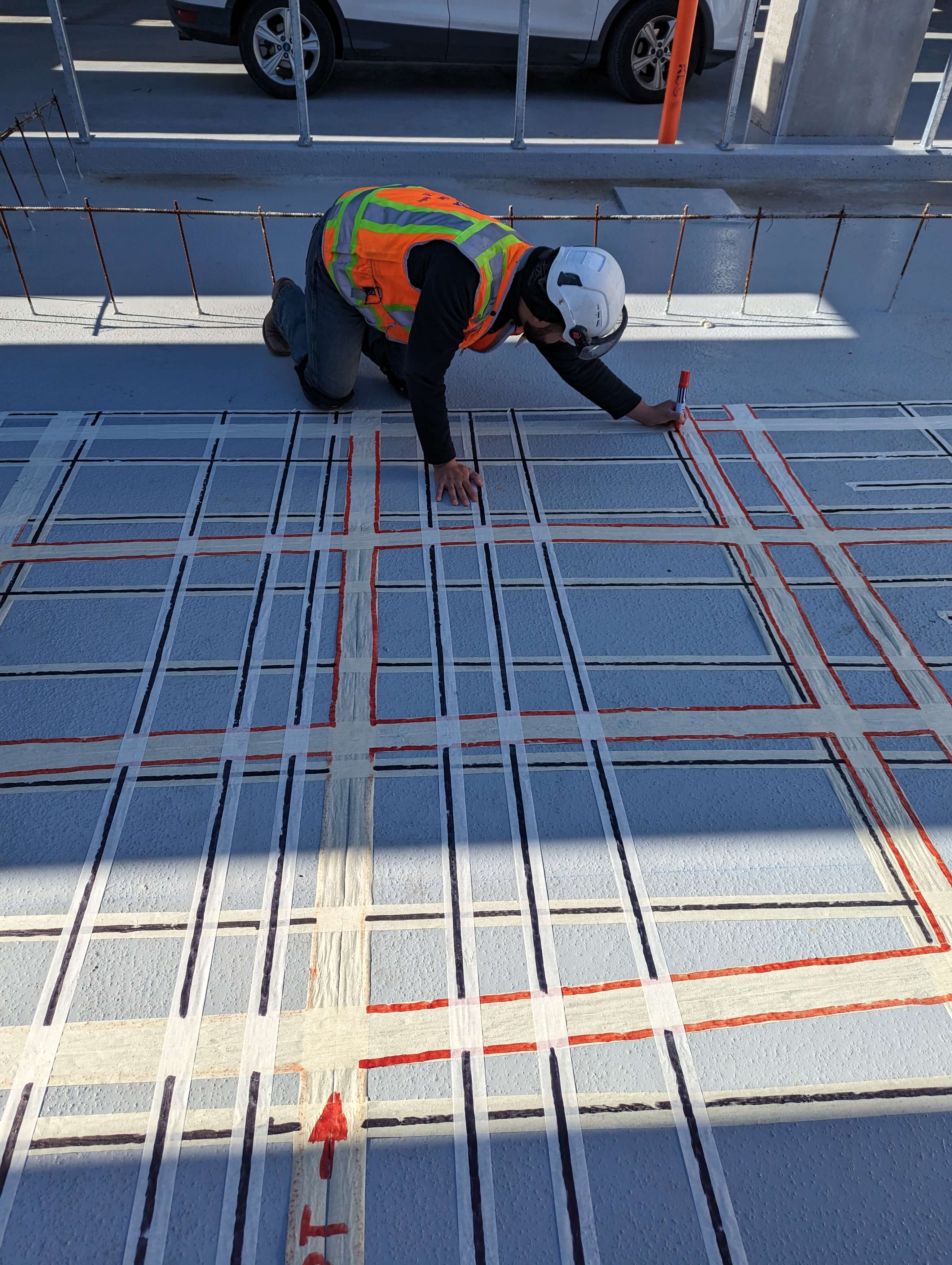Precision and Precision in Concrete Scanning Solutions
Precision and Precision in Concrete Scanning Solutions
Blog Article
Reveal the Transformative Power of Concrete Scanning in Maximizing Efficiency and Safety
Concrete scanning has actually arised as a crucial device in the building and construction market, supplying unparalleled advantages in enhancing job efficiency and making sure safety standards. The transformative power of concrete scanning exists in its capacity to give real-time data and detailed understandings, revolutionizing how jobs are intended and implemented.
Value of Concrete Scanning
Making sure the architectural integrity and safety and security of building and construction tasks begins with the critical step of performing thorough concrete scanning. Concrete scanning is a non-destructive technique utilized to find and map subsurface elements within concrete frameworks. This procedure is important in recognizing potential dangers, such as rebar, post-tension cable televisions, and avenues, that might be hidden within the concrete. By using innovative innovations like ground-penetrating radar (GPR) and electromagnetic induction, construction teams can accurately find these components without causing any kind of damages to the structure.
The importance of concrete scanning can not be overstated, as it plays an important role in stopping accidents, decreasing task hold-ups, and making certain the long-lasting resilience of the building and construction. By determining potential dangers prior to the construction phase begins, contractors can apply proper safety steps and make notified decisions relating to the layout and execution of the job. In addition, concrete scanning assists in optimizing project timelines and budget by staying clear of unexpected expenses and delays that might develop as a result of unexpected blockages within the concrete. Eventually, purchasing detailed concrete scanning is a proactive strategy that improves both performance and safety in building and construction projects.
Exactly How Concrete Scanning Functions
Concrete scanning runs as a vital tool in building tasks by employing sophisticated modern technologies to spot and map subsurface components without creating structural damages. Ground Passing Through Radar (GPR) and Electromagnetic Induction (EMI) are two key approaches used in concrete scanning.
During the scanning procedure, the information gathered is analyzed in real-time, permitting prompt recognition of potential hazards or barriers beneath the surface. By employing these advanced modern technologies, concrete scanning dramatically minimizes the risk of expensive damages and injuries on building sites.
Benefits of Concrete Scanning
One of the primary advantages of concrete scanning is the capability to detect and situate embedded items such as rebar, post-tension cables, and avenues accurately. Concrete scanning aids in preparation and creating a lot more effectively, as it gives specific info about the location and depth of architectural elements.

Situation Studies: Concrete Scanning Success

In another case, a construction company used 3D concrete scanning to assess the condition old concrete structures in a historical building. The comprehensive scans offered important insights right into the extent of damage and helped focus on upkeep efforts successfully. By proactively resolving locations of problem determined through scanning, the company had the ability to extend the life expectancy of the structure and make sure occupant safety.
These study highlight the transformative power of concrete scanning in improving efficiency, precision, and security in building and construction jobs.
Carrying Out Concrete Scanning in Projects
Executing sophisticated scanning modern technologies throughout building and construction projects has come to be increasingly important for boosting precision and safety. By integrating concrete scanning right into project planning and execution, building groups can determine prospective threats, such as rebar or post-tension cables, hidden within concrete frameworks. This positive method reduces the risk of mishaps, delays, and expensive rework, eventually causing extra efficient job timelines and budget plans.
To implement concrete scanning efficiently, task supervisors should work together closely with seasoned scanning experts to determine one of the most appropriate scanning methods for the certain task demands. Involving scanning experts from the beginning of a task enables the group to create thorough scanning plans that address vital locations of concern and ensure detailed information collection.
Furthermore, integrating concrete scanning right into normal job process can improve decision-making processes, as real-time her explanation scan data offers instant insights right into the problem of concrete frameworks - Concrete Scanning. This data-driven approach assists in informed analytic and enables teams to make changes quickly, fostering a culture of effectiveness and safety and security throughout the job lifecycle

Final Thought
To conclude, concrete scanning plays an essential duty in enhancing performance and safety in building and construction jobs. By making use of advanced technology to map and identify out underlying structures within concrete, this procedure aids to stop expensive errors, make certain architectural integrity, and lessen risks on site. With the capacity to reveal surprise components and provide exact data, concrete scanning confirms to be a beneficial tool for investigate this site maximizing task results and taking full advantage of general success.
Concrete scanning is a non-destructive method utilized to spot and map subsurface components within concrete frameworks. Furthermore, concrete scanning assists in optimizing project timelines and budget plan by staying clear of unforeseen costs and delays that may emerge due to unexpected blockages within the concrete. One noteworthy case research study involves a large renovation task where concrete scanning played a critical function in ensuring task success.In another situation, a building and construction business used 3D concrete scanning to evaluate the condition of aging concrete structures in a historic structure. By incorporating concrete scanning right into task planning and implementation, building and construction groups can identify prospective threats, such as rebar or post-tension wires, hidden within concrete frameworks.
Report this page